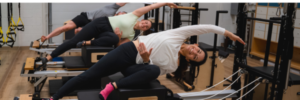Knee surgery is a daunting thing, whether it be to repair damaged ligaments, menisci or a total knee replacement, the recovery process is oftentimes painful and a little frustrating. Therefore, we have created a list of tips to help you have a speedy recovery.
Polar Care Wave Compression Therapy: Tested by our own staff, this device allows you to reap the benefits of cold compression therapy at home. Used in recovery from surgery or acute injury, the polar care wave utilizes cold compression to reduce pain, swelling and edema for optimal recovery time.

Seek Proper Support Before & After Surgery: Those waiting for their operation know that it can take awhile to move up the waitlist. Therefore, seeking a little extra support from a knee brace can help to keep proper alignment, and take some pressure off that joint. For those recovering or recovered from their surgery, a brace will support you while your tissues heal and you regain some strength. Furthermore, contrary to popular belief wearing a brace will not weaken your joint, it functions to keep it aligned and moving properly which can help with strength regeneration.
Braces we Recommend:
Osskin Evoke OA Custom Knee Brace: Used for relief of severe osteoarthritis this lightweight, 3D printed knee brace takes custom to the next level. Using a scan of your leg this brace is printed to fit you exactly while still being low-profile enough to fit under clothes for all day wear.

Bauerfeind Genutrain OA: This brace is good for those who experience medial or lateral osteoarthritis of the knee. Furthermore it helps with instability and helps to provide postoperative relief from cartilage surgery and meniscal lesions.
Bauerfeind Genutrain S: Using a combination of lateral supports as well as adjustable straps, the Genutrain S helps with moderate instability as well as arthritis and osteoarthritis of the knee. It provides support and restricts joint movement for pre and post-operative management of injuries including ACL rupture, the “unhappy triad”, meniscal surgery, and collateral ligament injuries. Furthermore, it functions as treatment for conditions affecting the knee such as severe osteoarthritis and rheumatoid arthritis. Book an appointment with one of our Pedorthists to be measured for yours today!

Keep Moving: While it may be tempting to stick to bed rest, in doing so you’re actually doing yourself a disservice. Lack of movement about your injured joint can make your muscles stiff. Therefore, small amounts of movement allows those muscles to stretch, improving circulation and providing the injured area with appropriate blood flow, minimizing swelling and providing quality oxygenated blood. Additionally, moving that joint will cause a little bit of inflammation which actually helps with the healing process and tissue regeneration. *Remember*: Too much movement too soon on your new knee can actually have opposite effects. This can include increased inflammation or even re-injury of your knee. Use your body as a guide and if things start to become too painful, dial it back.
Follow an Exercise Regimen: Once most of the initial pain and inflammation has subsided, it’s time to put that new knee to work! Following an exercise program prescribed by an exercise professional is crucial to regain stability, mobility and strength in the supporting musculature, tendons and ligaments of your injured knee. Book an appointment with one of our Kinesiologists who can help prescribe you appropriate exercises to safely and effectively help you to regain optimal functioning in your knee.
Written By Capri Verschoor B.H.K



